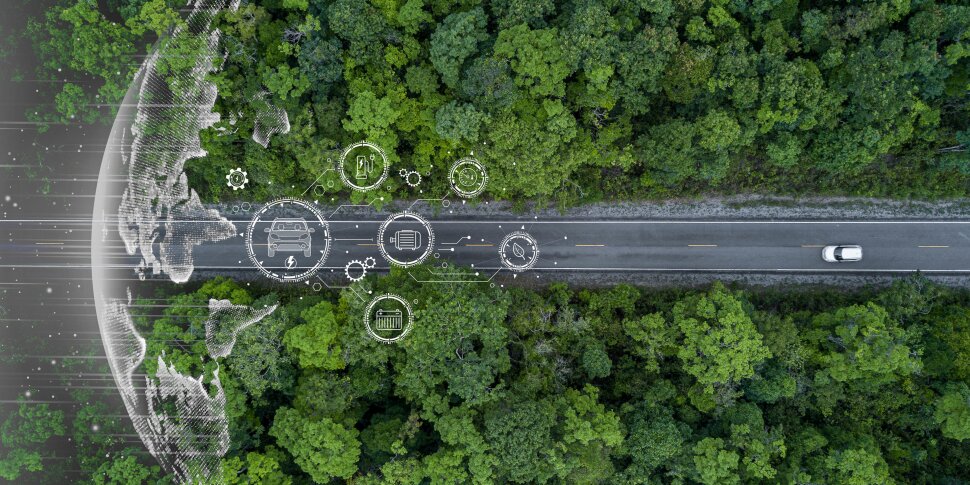Empowering Resilience: Factors Influencing Community Willingness in Disaster Training Initiatives
Downloads
Community-Based Disaster Management (CBDM) emphasizes the centrality of local participation in efforts to build resilience and reduce disaster risks. While the Sendai Framework for Disaster Risk Reduction 2015–2030 advocates inclusive and community-driven preparedness strategies, empirical research on the determinants of an individual’s willingness to engage in disaster management training remains underdeveloped. This study addressed this gap by examining the willingness of community members to participate in disaster preparedness programs, as well as identifying the socio-demographic and psychosocial factors that influence this willingness. Guided by the Theory of Planned Behavior (TPB), this study conceptualized willingness as an element shaped by the attitude toward disaster preparedness, subjective norms, and perceived behavioral control. Variables such as age, gender, income, and education were investigated as moderating factors. Findings suggest that higher educational attainment is associated with greater awareness and readiness to engage in training, while older age groups tend to demonstrate stronger participation, possibly due to enhanced life experiences and risk perception. This study contributes theoretically and practically by integrating behavioral insight with disaster policy frameworks. It offers evidence-based recommendations for designing targeted and culturally appropriate training programs that create proactive community engagement and advance the Sendai Framework’s objectives.
Downloads
[1] Laframboise, N., & Loko, B. (2012). Natural Disasters: Mitigating Impact, Managing Risks. IMF Working Papers, 12(245), 1. doi:10.5089/9781475512717.001.
[2] Keen, M., Freeman, P. K., & Mani, M. (2003). Dealing with Increased Risk of Natural Disasters: Challenges and Options. IMF Working Papers, 03(197), 1. doi:10.5089/9781451860030.001.
[3] Clarke, D., de Janvry, A., Sadoulet, E., & Skoufias, E. (2015). Disaster Risk Financing and Insurance: Issues and Results. Report on a workshop held at the Ferdi, June 4 and 5, 2015.
[4] Kumar, A., Diksha, D., Pandey, A. C., & Khan, M. L. (2020). Urban Risk and Resilience to Climate Change and Natural Hazards: A Perspective from Million-Plus Cities on the Indian Subcontinent. Techniques for Disaster Risk Management and Mitigation, 33–46, 33–46. doi:10.1002/9781119359203.ch3.
[5] Kousky, C. (2014). Informing climate adaptation: A review of the economic costs of natural disasters. Energy Economics, 46, 576–592. doi:10.1016/j.eneco.2013.09.029.
[6] Sangha, K. K., Russell-Smith, J., Evans, J., & Edwards, A. (2020). Methodological approaches and challenges to assess the environmental losses from natural disasters. International Journal of Disaster Risk Reduction, 49, 101619. doi:10.1016/j.ijdrr.2020.101619.
[7] Hadi. (2022). Ensuring Malaysia’s disaster preparedness. Agensi Pengurusan Bencana Negara (NADMA), Malaysia. Available online: https://www.nadma.gov.my/bi/media-en/news/302-ensuring-malaysia-s-disaster-preparedness (accessed on June 2025).
[8] United Nations ESCAP (2020). Malaysia: Resilience Portal. Available online: https://rrp.unescap.org/country-profile/mys (accessed on August 2025).
[9] World Bank. (2025). World Bank Climate Change Knowledge Portal. Vulnerability | Climate Change Knowledge Portal. Available online: https://climateknowledgeportal.worldbank.org/country/malaysia/vulnerability (accessed on August 2025).
[10] ECHO. (2025). Echo flash. Daily Flash. Available online: https://erccportal.jrc.ec.europa.eu/ECHO-Products/Echo-Flash#/daily-flash-archive/4940 (accessed on August 2025).
[11] ADRC. (2022). Malaysia: Flood: 2022. Asian Disaster Reduction Center (ADRC), Kobe, Japan. Available online: https://www.adrc.asia/view_disaster_en.php?Lang=en&Key=2544 (accessed on August 2025).
[12] ADRC. (2017). Malaysia: Flood: 2017. Asian Disaster Reduction Center (ADRC), Kobe, Japan. Available online: https://www.adrc.asia/view_disaster_en.php?Lang=en&Key=2232 (accessed on August 2025).
[13] Bhuiyan, T. R., Er, A. C., Muhamad, N., & Pereira, J. J. (2022). Evaluating the cumulative costs of small-scale flash floods in Kuala Lumpur, Malaysia. Journal of Hydrology, 612, 128181. doi:10.1016/j.jhydrol.2022.128181.
[14] Ruiz Estrada, M. A., Koutronas, E., Tahir, M., & Mansor, N. (2017). Hydrological hazard assessment: THE 2014–15 Malaysia floods. International Journal of Disaster Risk Reduction, 24, 264–270. doi:10.1016/j.ijdrr.2017.06.005.
[15] Rosmadi, H. S., Ahmed, M. F., Mokhtar, M. Bin, & Lim, C. K. (2023). Reviewing Challenges of Flood Risk Management in Malaysia. Water (Switzerland), 15(13), 2390. doi:10.3390/w15132390.
[16] Przyluski, V., & Hallegatte, S. (2010). The economics of natural disasters: Concepts and methods. World Bank Group, Washington D.C., United States.
[17] Al-Amin, A. Q., Nagy, G. J., Masud, M. M., Filho, W. L., & Doberstein, B. (2019). Evaluating the impacts of climate disasters and the integration of adaptive flood risk management. International Journal of Disaster Risk Reduction, 39, 101241. doi:10.1016/j.ijdrr.2019.101241.
[18] Que, T., Wu, Y., Hu, S., Cai, J., Jiang, N., & Xing, H. (2022). Factors Influencing Public Participation in Community Disaster Mitigation Activities: A Comparison of Model and Nonmodel Disaster Mitigation Communities. International Journal of Environmental Research and Public Health, 19(19), 12278. doi:10.3390/ijerph191912278.
[19] Shammin, R., Wang, A., & Sosland, M. (2021). A survey of community-based adaptation in developing countries. Climate Change and Community Resilience: Insights from South Asia, 31–47. doi:10.1007/978-981-16-0680-9_3.
[20] Tozier de la Poterie, A., & Baudoin, M. A. (2015). From Yokohama to Sendai: Approaches to Participation in International Disaster Risk Reduction Frameworks. International Journal of Disaster Risk Science, 6(2), 128–139. doi:10.1007/s13753-015-0053-6.
[21] Vasileiou, K., Barnett, J., & Fraser, D. S. (2022). Integrating local and scientific knowledge in disaster risk reduction: A systematic review of motivations, processes, and outcomes. International Journal of Disaster Risk Reduction, 81, 103255. doi:10.1016/j.ijdrr.2022.103255.
[22] Maskrey, A. (2011). Revisiting community-based disaster risk management. Environmental Hazards, 10(1), 42–52. doi:10.3763/ehaz.2011.0005.
[23] Amin, R., & Shammin, R. (2021). A resilience framework for climate adaptation: The Shyamnagar experience. Climate Change and Community Resilience: Insights from South Asia, 69–84. doi:10.1007/978-981-16-0680-9_5.
[24] Mizutori, M. (2020). Reflections on the Sendai Framework for Disaster Risk Reduction: Five Years Since Its Adoption. International Journal of Disaster Risk Science, 11(2), 147–151. doi:10.1007/s13753-020-00261-2.
[25] Saad, M. S. H., Ali, M. I., Razi, P. Z., & Ramli, N. I. (2024). Flood Risk Management in Development Projects: A Review of Malaysian Perspective within the Sendai Framework for Disaster Risk Reduction 2015-2030. Construction, 4(2), 103–117. doi:10.15282/construction.v4i2.10592.
[26] Islam, M. M., Amir, A. A., & Begum, R. A. (2021). Community awareness towards coastal hazard and adaptation strategies in Pahang coast of Malaysia. Natural Hazards, 107(2), 1593–1620. doi:10.1007/s11069-021-04648-2.
[27] Kamarudin, K. H., Rashid, M. F., & Omar Chong, N. (2022). Local Community Knowledge for Flood Resilience: A Case Study from East Coast Malaysia. International Journal of Built Environment and Sustainability, 9(2), 21–34. doi:10.11113/ijbes.v9.n2.922.
[28] Kiss, B., Sekulova, F., Hörschelmann, K., Salk, C. F., Takahashi, W., & Wamsler, C. (2022). Citizen participation in the governance of nature-based solutions. Environmental Policy and Governance, 32(3), 247–272. doi:10.1002/eet.1987.
[29] Leeonis, A. N., Ahmed, M. F., Halder, B., Mokhtar, M. Bin, Lim, C. K., Juneng, L., & Khirotdin, R. P. K. (2024). Mitigating flood risk at Shah Alam, Malaysia for sustainable development. Discover Sustainability, 5(1), 352. doi:10.1007/s43621-024-00504-y.
[30] Ramli, M. W. A., Alias, N. E., Yusof, H. M., Yusop, Z., & Taib, S. M. (2021). Development of a local, integrated disaster risk assessment framework for Malaysia. Sustainability (Switzerland), 13(19), 10792. doi:10.3390/su131910792.
[31] CEDHA. (2019). Malaysia: Disaster management reference handbook (June 2019) - Malaysia. Center for Excellence in Disaster & Humanitarian Assistance. Available online: https://reliefweb.int/report/malaysia/malaysia-disaster-management-reference-handbook-june-2019 (accessed on August 2025).
[32] OECD. (2015). The Changing Face of Strategic Crisis Management - OECD Reviews of Risk Management Policies. OECD Reviews of Risk Management Policies, 133. Available online: https://www.oecd.org/en/publications/the-changing-face-of-strategic-crisis-management_9789264249127-en.html (accessed on August 2025).
[33] Adeagbo, A., Daramola, A., Carim-Sanni, A., Akujobi, C., & Ukpong, C. (2016). Effects of natural disasters on social and economic wellbeing: A study in Nigeria. International Journal of Disaster Risk Reduction, 17, 1–12. doi:10.1016/j.ijdrr.2016.03.006.
[34] Wang, Z., & Wang, F. (2023). Well-being Effects of Natural Disasters: Evidence from China’s Wenchuan Earthquake. Journal of Happiness Studies, 24(2), 563–587. doi:10.1007/s10902-022-00609-z.
[35] Nakai, F., & Nakano, G. (2023). Community-mediated individual disaster preparedness practices: A case study in Kochi, Japan. International Journal of Disaster Risk Reduction, 86, 103532. doi:10.1016/j.ijdrr.2023.103532.
[36] Ahmadun, F. R., Wong, M. M. R., & Mat Said, A. (2020). Consequences of the 2004 Indian Ocean Tsunami in Malaysia. Safety Science, 121, 619–631. doi:10.1016/j.ssci.2019.05.016.
[37] Jacob, J., Valois, P., Tessier, M., Talbot, D., Anctil, F., Cloutier, G., & Renaud, J. S. (2023). Using the theory of planned behavior to identify key beliefs underlying flood-related adaptive behaviors in the province of Québec, Canada. Journal of Flood Risk Management, 16(3), e12906. doi:10.1111/jfr3.12906.
[38] Bin, O., & Polasky, S. (2004). Effects of flood hazards on property values: Evidence before and after hurricane Floyd. Land Economics, 80(4), 490–500. doi:10.2307/3655805.
[39] Berlemann, M. (2016). Does hurricane risk affect individual well-being? Empirical evidence on the indirect effects of natural disasters. Ecological Economics, 124, 99–113. doi:10.1016/j.ecolecon.2016.01.020.
[40] Rehdanz, K., Welsch, H., Narita, D., & Okubo, T. (2015). Well-being effects of a major natural disaster: The case of Fukushima. Journal of Economic Behavior and Organization, 116, 500–517. doi:10.1016/j.jebo.2015.05.014.
[41] Tsai, M. H., Chang, Y. L., Shiau, J. S., & Wang, S. M. (2020). Exploring the effects of a serious game-based learning package for disaster prevention education: The case of Battle of Flooding Protection. International Journal of Disaster Risk Reduction, 43, 101393. doi:10.1016/j.ijdrr.2019.101393.
[42] Johnson, V. A., Ronan, K. R., Johnston, D. M., & Peace, R. (2014). Evaluations of disaster education programs for children: A methodological review. International Journal of Disaster Risk Reduction, 9, 107–123. doi:10.1016/j.ijdrr.2014.04.001.
[43] Oktari, R. S., Shiwaku, K., Munadi, K., Syamsidik, & Shaw, R. (2015). A conceptual model of a school-community collaborative network in enhancing coastal community resilience in Banda Aceh, Indonesia. International Journal of Disaster Risk Reduction, 12, 300–310. doi:10.1016/j.ijdrr.2015.02.006.
[44] Frankenberg, E., Sikoki, B., Sumantri, C., Suriastini, W., & Thomas, D. (2013). Education, vulnerability, and resilience after a natural disaster. Ecology and Society, 18(2), 16. doi:10.5751/ES-05377-180216.
[45] Tanes, Z., & Cho, H. (2013). Goal setting outcomes: Examining the role of goal interaction in influencing the experience and learning outcomes of video game play for earthquake preparedness. Computers in Human Behavior, 29(3), 858–869. doi:10.1016/j.chb.2012.11.003.
[46] Mase, A. S., Gramig, B. M., & Prokopy, L. S. (2017). Climate change beliefs, risk perceptions, and adaptation behavior among Midwestern U.S. crop farmers. Climate Risk Management, 15, 8–17. doi:10.1016/j.crm.2016.11.004.
[47] Brown, P., Daigneault, A. J., Tjernström, E., & Zou, W. (2018). Natural disasters, social protection, and risk perceptions. World development, 104, 310-325. doi:10.1016/j.worlddev.2017.12.002.
[48] Marshall, T. M. (2020). Risk perception and safety culture: Tools for improving the implementation of disaster risk reduction strategies. International Journal of Disaster Risk Reduction, 47, 101557. doi:10.1016/j.ijdrr.2020.101557.
[49] Albris, K., Lauta, K. C., & Raju, E. (2020). Disaster Knowledge Gaps: Exploring the Interface Between Science and Policy for Disaster Risk Reduction in Europe. International Journal of Disaster Risk Science, 11(1), 1-12. doi:10.1007/s13753-020-00250-5.
[50] Sheikhi, R. A., Seyedin, H., Qanizadeh, G., & Jahangiri, K. (2021). Role of Religious Institutions in Disaster Risk Management: A Systematic Review. Disaster Medicine and Public Health Preparedness, 15(2), 239–254. doi:10.1017/dmp.2019.145.
[51] Zuccaro, G., Leone, M. F., & Martucci, C. (2020). Future research and innovation priorities in the field of natural hazards, disaster risk reduction, disaster risk management and climate change adaptation: a shared vision from the ESPREssO project. International Journal of Disaster Risk Reduction, 51, 101783. doi:10.1016/j.ijdrr.2020.101783.
[52] Fakhruddin, B., Clark, H., Robinson, L., & Hieber-Girardet, L. (2020). Should I stay or should I go now? Why risk communication is the critical component in disaster risk reduction. Progress in Disaster Science, 8, 100139. doi:10.1016/j.pdisas.2020.100139.
[53] Haer, T., Botzen, W. J. W., & Aerts, J. C. J. H. (2016). The effectiveness of flood risk communication strategies and the influence of social networks-Insights from an agent-based model. Environmental Science and Policy, 60, 44–52. doi:10.1016/j.envsci.2016.03.006.
[54] Hampel, J. (2006). Different concepts of risk - A challenge for risk communication. International Journal of Medical Microbiology, 296(SUPPL. 1), 5–10. doi:10.1016/j.ijmm.2005.12.002.
[55] Bosher, L., Chmutina, K., & van Niekerk, D. (2021). Stop going around in circles: towards a reconceptualisation of disaster risk management phases. Disaster Prevention and Management: An International Journal, 30(4–5), 525–537. doi:10.1108/DPM-03-2021-0071.
[56] Khan, A., Gupta, S., & Gupta, S. K. (2020). Multi-hazard disaster studies: Monitoring, detection, recovery, and management, based on emerging technologies and optimal techniques. International Journal of Disaster Risk Reduction, 47, 101642. doi:10.1016/j.ijdrr.2020.101642.
[57] Prasetya, A. R. A., Rachmawati, T. A., & Usman, F. (2023). A Multicriteria Approach to Assessing Landslide Community Resilience. Case Study: Bumiaji Sub-District. IOP Conference Series: Earth and Environmental Science, 1186(1), 12003. doi:10.1088/1755-1315/1186/1/012003.
[58] Zaremohzzabieh, Z., Samah, A. A., Roslan, S., Shaffril, H. A. M., D’Silva, J. L., Kamarudin, S., & Ahrari, S. (2021). Household preparedness for future earthquake disaster risk using an extended theory of planned behavior. International Journal of Disaster Risk Reduction, 65, 102533. doi:10.1016/j.ijdrr.2021.102533.
[59] Saja, A. M. A., Sahid, M. S. L., & Sutharshanan, M. (2020). Implementing Sendai Framework priorities through risk-sensitive development planning – A case study from Sri Lanka. Progress in Disaster Science, 5, 100051. doi:10.1016/j.pdisas.2019.100051.
[60] UNISDR. (2012). UN International Strategy for Disaster Reduction (UNISDR) | Department of Economic and Social Affairs. Available online: https://sdgs.un.org/statements/un-international-strategy-disaster-reduction-unisdr-8377 (accessed on June 2025).
[61] Wahlström, M. (2015). New Sendai Framework Strengthens Focus on Reducing Disaster Risk. International Journal of Disaster Risk Science, 6(2), 200–201. doi:10.1007/s13753-015-0057-2.
[62] UNDDR. (2016). United Nations Office for Disaster Risk Reduction 2016. UNISDR Annual Report 2015. Available online: https://www.undrr.org/publication/unisdr-annual-report-2015 (accessed on August 2025).
[63] Ha, K. M. (2015). Four models on globalizing disaster management in the Asia-Pacific region: a comparative perspective. Pacific Review, 28(2), 211–235. doi:10.1080/09512748.2014.995123.
[64] Hidayat, B., & Rasadi, A. (2020). Disaster-based participatory development planning. E3S Web of Conferences, 156, 1010. doi:10.1051/e3sconf/202015601010.
[65] Pfefferbaum, B., L. Van Horn, R., & L. Pfefferbaum, R. (2018). Involving Adolescents in Building Community Resilience for Disasters. Adolescent Psychiatry, 8(4), 253–265. doi:10.2174/2210676608666180112123628.
[66] Maly, E., & Suppasri, A. (2020). The Sendai Framework for Disaster Risk Reduction at Five: Lessons from the 2011 Great East Japan Earthquake and Tsunami. International Journal of Disaster Risk Science, 11(2), 167–178. doi:10.1007/s13753-020-00268-9.
[67] Nugrahandika, W. H., & Putri, R. N. (2021). Sustainable Community-Based Disaster Management (CBDM) in Wonolelo Village, Bantul Regency, Special Region of Yogyakarta, Indonesia. IOP Conference Series: Earth and Environmental Science, 764(1), 12036. doi:10.1088/1755-1315/764/1/012036.
[68] Saputra, A. V., Ardiati, A. S., & Sofiany, I. R. (2025). Community-Based Disaster Mitigation for Building Flood Resilience in Malaka-Timor, Indonesia. Environmental Communication, 1–5. doi:10.1080/17524032.2025.2461620.
[69] Samad, M. A., Arifin, K., & Abas, A. (2025). A systematic literature review on the challenges of Southeast Asian countries in natural disaster management. Cogent Social Sciences, 11(1). doi:10.1080/23311886.2024.2435590.
[70] Rusmana, A., Damayani, N. A., Rizal, E., Siti Khadijah, U. L., Lusiana, E., Saepudin, E., Sjuchro, D. W., & Anwar, R. K. (2024). Community-Based disaster mitigation and its challenge: A case study in Pangandaran coastal area, Indonesia. Journal of Infrastructure, Policy and Development, 8(6), 4075. doi:10.24294/jipd.v8i6.4075.
- The authors retain all copyrights. It is noticeable that authors will not be forced to sign any copyright transfer agreements.
- This work (including HTML and PDF Files) is licensed under a Creative Commons Attribution 4.0 International License.














